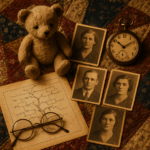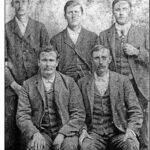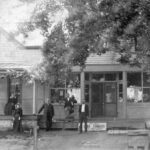The Challenge of Tracing Female Ancestors
Tracing our ancestors is like assembling a complex puzzle, but when it comes to female ancestors, especially in the 19th century, the challenge intensifies. One such ancestor is Sarah Dickson, whose story exemplifies the difficulties and rewards of genealogical research.
The Search Begins: William S. Murphy and Family
Our story starts with William S. Murphy, who married Sarah Dickson in 1858 in Russell County, Alabama. Together, they had two children, John and Lavonia Onelia. Sarah’s life, however, was cut short in 1866, possibly during or shortly after Lavonia’s birth. This tragic event marked the beginning of a challenging search for her origins.

The Elusiveness of Female Ancestors
In the 19th century, women’s identities were often overshadowed by those of their husbands. Records typically focused on the male lineage, making it difficult to trace the maternal line. In Sarah’s case, she appeared in few records, mostly as “Mrs. William Murphy.” This lack of information is a common hurdle in genealogical research for female ancestors.
Overcoming the Barriers
The key to uncovering Sarah’s past lay in understanding the societal context of her time. The search involved delving into marriage, death, and birth records, but these were not enough. The breakthrough came through a combination of DNA analysis and meticulous examination of guardianship papers.
Guardianship Papers: A Clue in Talbot County, Georgia
The turning point was the discovery of guardianship papers in Talbot County, Georgia. These documents, often overlooked in genealogical research, can provide vital clues. In Sarah’s case, they revealed a connection to the Dickson family.
DNA: Confirming the Connection
DNA testing provided the crucial link needed to confirm Sarah’s lineage. By comparing genetic markers with known descendants of the Dickson family, Sarah’s place in the family tree was finally confirmed.
Sarah Dickson’s Roots Unveiled
After extensive research, it was established that Sarah was the daughter of Tomas and Salatha (Kinsey) Dickson of Talbot County, Georgia. This discovery not only filled a gap in the family tree but also shed light on her background and heritage.
Lessons Learned
Sarah Dickson’s story highlights the importance of perseverance in genealogical research, especially when it comes to tracing female ancestors. It demonstrates the need to look beyond traditional records and to embrace modern tools like DNA testing.
Conclusion
Finding Sarah Dickson was a journey that combined traditional genealogical methods with modern DNA analysis. It serves as a testament to the determination of genealogists and the evolving nature of family history research. Sarah’s story, once hidden in the shadows of the past, now stands as a beacon for those searching for their elusive female ancestors.






